Apocynum cannabinum
A common plant that is a good source of fiber
Apocynum cannabinum Indian hemp
The first thing to know about this native plant is that, in spite of one of its common and its species name, it contains no psychoactive drugs. In fact, all parts of the plant are poisonous and can cause heart failure if consumed. The common name dogbane is an indicator that it can be poisonous to dogs. Both the term hemp and cannabinum as its species name refer to the fact that the plant can be the source of useful fiber.
The flowers of hemp dogbane are small and white with 5 lobes. Close examination would show 5 stamens and one pistil. The ⅛ inch long, fragrant, bell-shaped flowers grow in loose clusters at the top of the plant or in the leaf axils. These clusters are 1-3 inches wide. A variety of insects serve as pollinators, including butterflies and moths. The fruits are 4-8 inch pods that normally occur in pairs. The seeds have tufts of hair for wind distribution.
As noticeable as the flowers are the reddish-purple branching upper stems and the paired elliptical leaves that resemble those of milkweed. The leaves have white hairs on the underside. The main stems can become woody. The sap is milky and can cause skin blistering. The plant grows 2-5 feet tall in open thickets, edges of woods and along shores. It prefers soil that contains gravel or sand, but also moisture.
Hemp dogbane is found throughout North America and is common in every county in Pennsylvania. The flowers bloom from June to August. It can be planted in gardens, but it can spread rapidly from the deep rootstock and crowd out other plants. It can also reduce crop yields in agricultural areas, especially where soybeans are grown. The caterpillars of the Monarch and Queen butterflies will not feed on the leaves.
Cutting the stems and then removing the long, silky strands is the best method to extract the fiber of this species. The fiber is harvested in the fall when the toxins migrate to the roots. It is a good substitute for flax and does not shrink and retains its strength in water. The fiber can be used for making clothing, twine, bags, linen and paper. Native Americans used it to make nets and fishing lines as well as rough clothing.
In spite of its toxicity, extracts from this plant have been used as herbal medicines for a variety of ailments, but it should be used with great care or not at all. This species rarely poisons humans, but livestock more often become victims.
Habitat & Range
Common in woodlands, fields and meadows, limestone bluffs. Prefers full sun and sandy, gravelly, well-drained soils. Can tolerate part shade.
Present throughout the state.
Range: Native to most of North America, found throughout the southern half of Canada and in every U.S. state except Hawaii.
| EMP: | FACU |
|---|---|
| NCNE: | FAC |
Phenology
Flowers June to August.
Fruits late summer to early autumn.
Characteristics
Inflorescence terminal and axillary three-way branching cymes with dome-shaped clusters at tips of stems and upper leaf axils; 20 to 50 flowers per cluster
Flowers small, white to greenish, cylindric to urn-shaped, 5 erect or slighly spreading lobes; 5 stamens, 1 pistil; ⅛″ long
Leaves ascending or spreading, simple, opposite, ovate to oblong-lanceolate or elliptic; glabrous or hairy beneath; 2 to 6″ long, 1 to 2½″ wide
Stems upright, branched, light green to reddish-brown, terete (not angled or ridged); glabrous and maybe glaucous, milk sap inside
Rhizomes underground; plant forms dense colonies via rhizomes
Fruit dry long slender pods, slighly curved; in pairs; 4 to 8″ long; seeds small, brown, silky-haired for wind dispersal
Height 2 ½ to 5 feet
Plant Codes
S-rank: S5 (Secure)
G-rank: G5 (Secure)
Ecology
Highly poisonous to humans and mammals, however, insects such as bees, wasps, hummingbird moths, and butterflies feed on its nectar. Host plant for beetles such as the Chyrsochus auratus, Dogbane Leaf Beetle. Bees may use the dead, hollow stems for nesting.
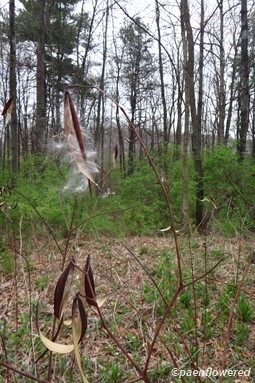


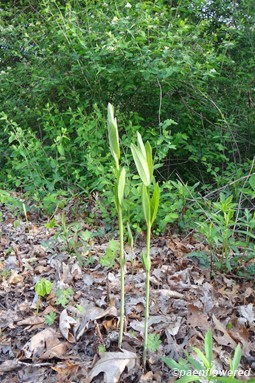
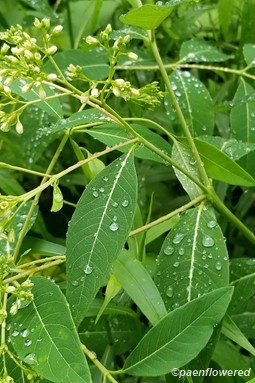
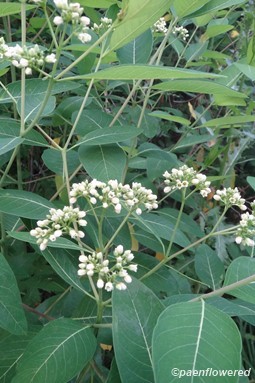
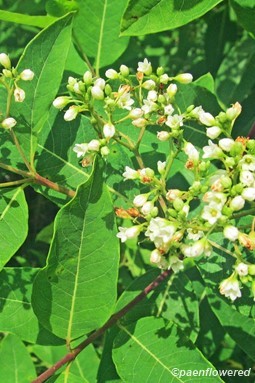
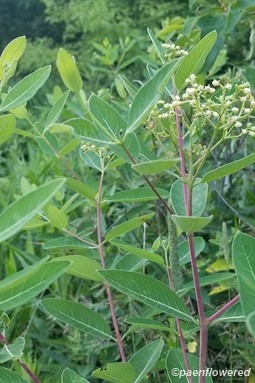
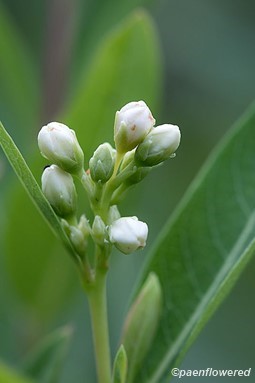

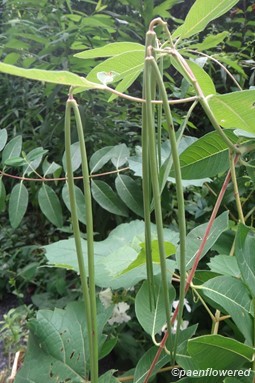
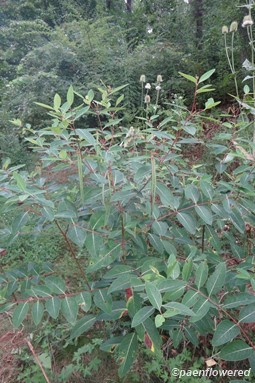
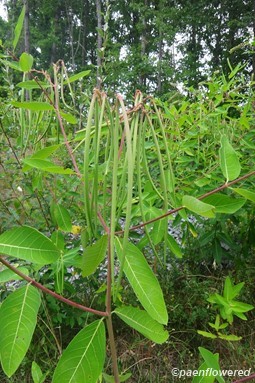


Comments
Have you spotted this plant in your area? We'd love to hear about your experience! Share your comments or questions about the plant below. Comments are moderated before posting.